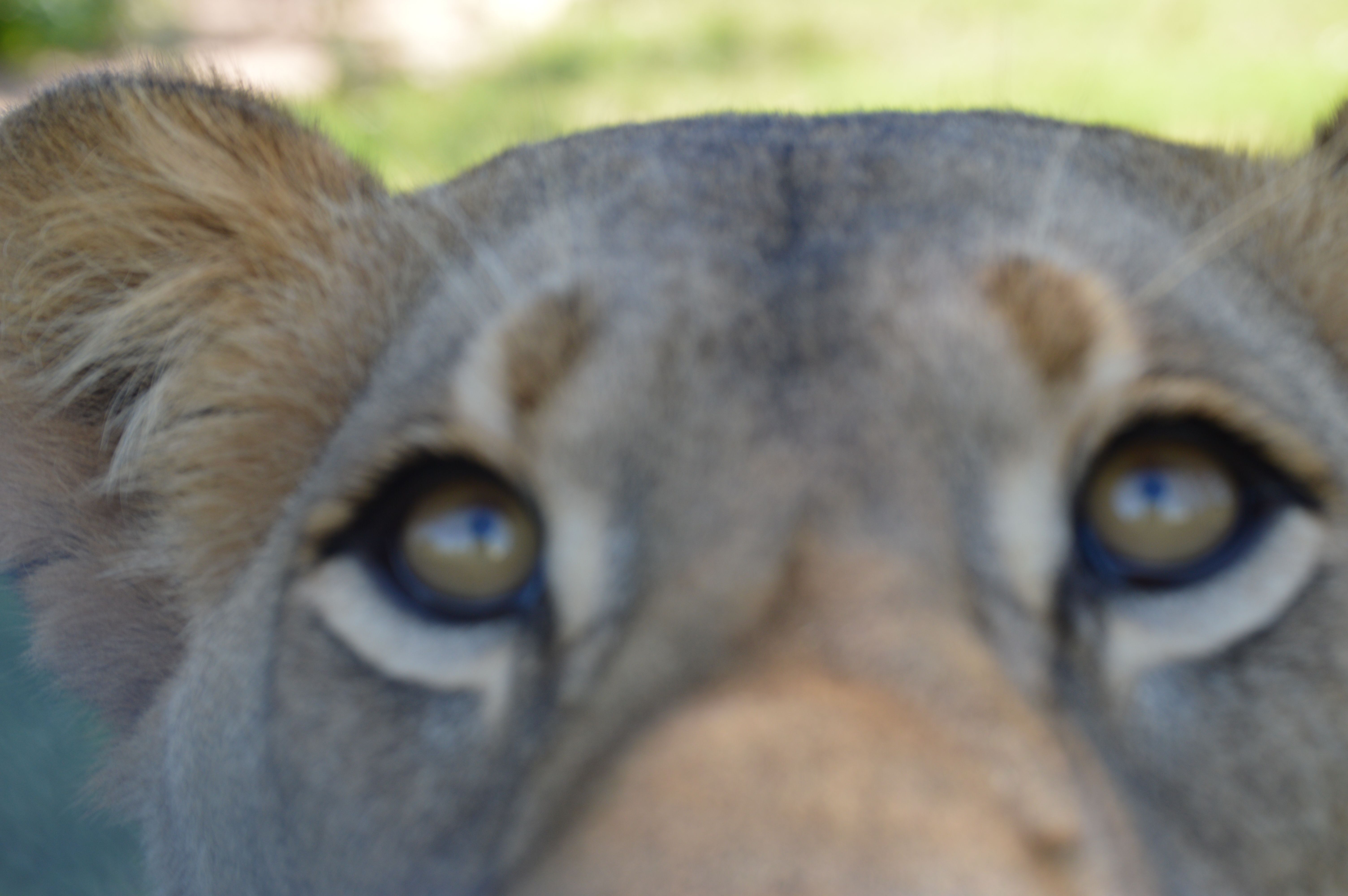-
How did CARE get started?
CARE has not always been the organization that it is today. The facility at which CARE currently resides originally was a big cat breeding facility that provided healthy, sanctioned animals to zoos and other facilities across the world during the 1990’s. However, many abused and unwanted big cats found a loving home here as well.
Over time, the capability to accommodate rescues grew and the need to provide a safe haven grew as well. As more and more cats coming from dire circumstances came to live at the compound, leadership shifted the focus of the organization away from commercial activity and started focusing more on providing a forever home to big cats in need. From this ideological shift, the spirit of CARE was born in 2003. It became the mission of the new non-profit facility to provide a safe, permanent, and loving home to big cats and other animals and to participate in educational and research projects that will improve the lives of captive populations and support the survival of different species world-wide. That is a mission that all of us here at CARE strive to achieve every day.
In 2003 CARE received its tax-exempt 501(c)(3) determination from the IRS. On November 2, 2004, the facility received its USDA Class C license.
-
Who owns CARE?
Well, no one and everyone! CARE is a 501(c)(3) non-profit organization which means that CARE was formed to carry out a public purpose, therefore the organization belongs to the public! CARE has a founder and Executive Director (Heidi Krahn) and a Board of Directors who are all responsible for the operation of the organization, but there are no "owners". While CARE belongs to you just as much as it does to us, we are able to say THANK YOU on the animals' behalf for all that you do to make their lives better! We are proud to have such a large group of people who are dedicated to collectively caring for the animals that reside at CARE!
-
Where does CARE get its funding?
CARE receives financial support from different venues. These include corporate sponsorship, our adoption and sponsorship programs, fund-raising events, tours of the CARE facility, and (most importantly) private donations from people like you! Our ability to care for these animals relies 100% on the profound generosity of our supporters, and we deeply thank each and every one of you who have so selflessly given so that the animals can live in safety and comfort.
-
Are you open to the public?
Absolutely! Our goal is to educate the public about issues affecting big cats and other animals, in turn, the public may become more active animal advocates. Please visit our Tours section to learn more about coming out for a tour.
-
Where do the animals come from?
The animals at CARE have come to us from a number of different places. Sadly, some of the cats have come from private owners and unethical entrepreneurs who oftentimes were abusive and neglectful to their cats. Some were born at the facility before CARE was established. Others have come to us from zoos or sanctuaries that have had to close their doors.
-
How do you feed your big cats?
Most institutions feed their big cats a processed meat product. For the most part, this contains quality meat with vitamins added for optimal feline health. Although this is appropriate, we have found feeding whole animals like cows, horses, deer, and store-bought chicken has great health benefits.
The animals that are used to feed the cats are donated to us by local farmers and owners. In all cases, the animals are either already deceased or are suffering from fatal injuries or incurable diseases that would result in death or long-term suffering on their own. In cases where these animals are brought to us alive, they are quickly and humanely euthanized. Our policy is to relieve any suffering immediately. These living animals arrive mainly due to colic, complications in birthing, broken legs or extreme emaciation due to old age. Each animal owner is asked a series of questions to assure the animal cannot be rehabilitated. In the cases where rehabilitation is possible, CARE has gone so far as finding permanent homes for the animals in need.
CARE has found it healthier for the animals to be fed what we call “holistically”, which means feeding the big cats the whole carcass. Our big cats are eating the way they naturally would in the wild. The multi-day process of feeding allows the digestive system to function how it was intended and promotes positive dental health (by eating bone, skin, and hide), as well as giving the cats an opportunity to use claws, jaws and the muscles attached. Everyday CARE and other research institutions are learning more about the positive effects of holistic feeding.
-
Do we allow public contact with the cats or allow people to take photos with cubs?
No. We are an educational and animal care facility, and while we are open to the public for tours, we are not a petting zoo or entertainment park. Our primary purpose is to provide a safe and healthy home for the animals in our care for the rest of their lives. Our rules and regulations were created to keep them, and our visitors, out of harm’s way. On our tours, we guarantee you will have a more intimate experience with our animals than you would get almost anywhere else, but not at the expense of your safety or the well-being of our residents. No exceptions.
-
Do CARE staff ever enter the enclosures with full grown big cats?
Never. Our main goal is to keep the animals in our care safe, that also means not putting them in a position to hurt us therefore putting themselves in danger, their CAREtakers, and the organization. We must always remember that the animals we care for are large, strong, and unpredictable creatures. We love our animals deeply, and we are able to give them all the attention and love that they need behind the safety of strong fencing. It is not necessary for us to enter the enclosures with them in order to take excellent care of them.
-
How can I help?
One of the easiest ways to help at CARE is to simply fill out our volunteer application form or make a donation. There are so many additional ways you can help as well, such as helping with our wish list, adopting or sponsoring an animal, partnering with us or creating a fundraiser. We always welcome assistance and support in any form!
-
Will you come pick up a wild bobcat/cougar roaming my neighborhood?
We get this question quite often, and we always worry about these situations. Typically it is not appropriate to remove indigenous wildlife from their environment and put them in captivity unless it is to hold them temporarily so that they may be rehabilitated and released. Max and Mia, our young bobcats, were one exception. They were very young when they were found without a mother, and imprinted on people immediately and so deeply that they were not candidates for release. Except for rare cases like this, most of the animals at CARE are captive born & raised. Captivity is all that they know, and it is a very different life for them than it would be for an animal that has spent its life in the wild and then placed in captivity.
While often humans can co-exist with local wildlife, there are always situations where humans (including children) are threatened and local authorities must get involved. Also, there may be instances where an animal is injured or trapped and needs assistance. In most cases, CARE is not in a position to get involved in these situations and we highly encourage you to not try and interfere either. If you see a wild animal somewhere where it shouldn’t be, that seems injured or is posing a threat to you, your family, or your pets, PLEASE contact local law enforcement or your state’s Fish and Wildlife Department. They are best equipped to help these animals and protect people in the area.
-
Can I surrender my exotic pet to you?
Many people are very misinformed when they decide to purchase an exotic pet, and many end up realizing that they cannot or do not want to provide the care that they need and that many are dangerous and not ideal pets. If you have an exotic pet that you are thinking of re-homing, please contact us. We have provided homes to many former pets including leopards, tigers, lemurs, bobcats, and a coati. If we have the ability to assist, we will. If we are unable to provide a home for them, we will provide you with suggestions on who else you can contact.
search





